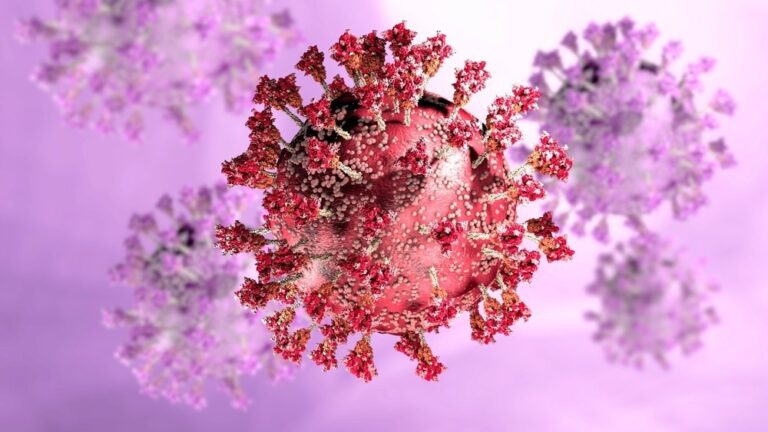
In a recent study published in PNAS, researchers demonstrated the structural basis of how the receptor-binding domain (RBD) nested Omicron mutations have adapted to mouse angiotensin-converting enzyme 2 (ACE2) reasonably than human ACE2.
Study: Structural basis for mouse receptor recognition by SARS-CoV-2 omicron variant. Image Credit: Naeblys/Shutterstock
Background
Speculations concerning the source of the severe acute respiratory syndrome coronavirus 2 (SARS-CoV-2) Omicron variant of concern (VOC) are abundant, yet the experimental evidence for a similar has been scarce. Its sudden emergence and rapid spread have raised questions on its animal reservoir.
Just a few amino acid residues differentiate the prototypic RBD from the RBD of bat coronaviruses. The Omicron BA.2 RBD differs from the prototypic RBD by 16 residues, with seven nested contained in the receptor-binding motif (RBM) directly contacting ACE2.
In regards to the study
In the current study, researchers recovered the evolutionary traces of Omicron RBM mutations. They investigated ACE2 recognition of the Omicron’s RBD, specializing in Q493R, Q498R, N501Y, and Y505H mutations, surrounding two mutational hotspots, hotspot-31 or hotspot-353.
The researchers deployed site-directed mutagenesis to synthesize the gene encoding the SARS-CoV-2 prototypic S, hACE2, and mACE2. Next, they used a surface plasmon resonance (SPR) assay to measure the binding interactions between RBDs and ACE2 molecules. To verify the SPR data, the team also performed an Omicron pseudovirus entry assay. They packaged Omicron pseudoviruses with 4 reverse mutations (Q493R, Q498R, N501Y, and Y505H) before infecting mACE2-expressing cells.
Finally, the team determined the crystal structure of Omicron RBD complexed with mouse ACE2 at 2.84 Å.
Study findings
Although the prototypic SARS-CoV-2 didn’t infect mice efficiently, other earlier SARS-CoV-2 VOCs from humans and other animal species had evolved the N501Y mutation to facilitate the usage of the mACE2 receptor by SARS-CoV-2. Also, only mice have asparagine (Asn31) and histidine(His353) of their ACE2 sequence, suggesting that Omicron evolved in mice.
SPR assay showed that the prototypic RBD didn’t bind mACE2, while the Omicron RBD sure mACE2 with good affinity. Introducing R493Q, R498Q, Y501N, and H505Y reverse mutations to the Omicron’s RBD, only barely reduced mACE2 binding. Further, the study identified Q493R, Q498R, and Y505H RBM mutations, specifically structurally adapted to mACE2, suggesting that these mutations were the evolutionary traces left behind by Omicron.
It’s what likely happened during SARS-CoV-2 evolution: a SARS-CoV-2 variant containing the N501Y mutation spread from humans or one other animal species into mice. Later, as this variant spread in mice, mouse-specific RBM mutations (e.g., Q493R, Q498R, and Y505N) evolved, contributing to the emergence of the Omicron VOC. The ACE2 sequences of some rat species also contain Asn31 or His353. Besides humans, Omicron might need also been transmitted to other species whose ACE2 contained virus binding motifs (VBM) residues compatible with the Omicron RBD.
The complex of the chimeric Omicron RBD and chimeric mACE2 revealed the extensive interactions between the Omicron RBM and mACE2 virus binding motifs (VBMs). Hotspot-31 stabilizes the core of the RBM/VBMs interface, where lysine31 and glutamic acid35 VBM residues form a hydrogen bond with glutamine493. In mACE2, residue 31 is an asparagine, replacing Lys31 in hACE2. Thus, on the interface between the Omicron RBM and mouse VBMs, Arg493 in RBM forms two bifurcated hydrogen bonds with Asn31 VBM, stabilizing the RBM/VBMs interface and enhancing Omicron RBD’s affinity for mACE2. Overall, the Omicron mutation Q493R around hotspot-31 structurally adapted to Asn31 in mACE2.
Conclusions
The present study data revealed that the Omicron RBD was well adapted to mouse ACE2 before it even began infecting humans. The researchers used biochemical and structural evidence to point out that mice facilitated the evolution of the Omicron VOC, providing much-needed insights into the evolutionary origin of SARS-CoV-2. These findings would also facilitate epidemiological surveillance of SARS-CoV-2 in animals, reminiscent of mice and rats, to make clear the SARS-CoV-2 evolutionary trajectory and forestall future coronavirus pandemics.